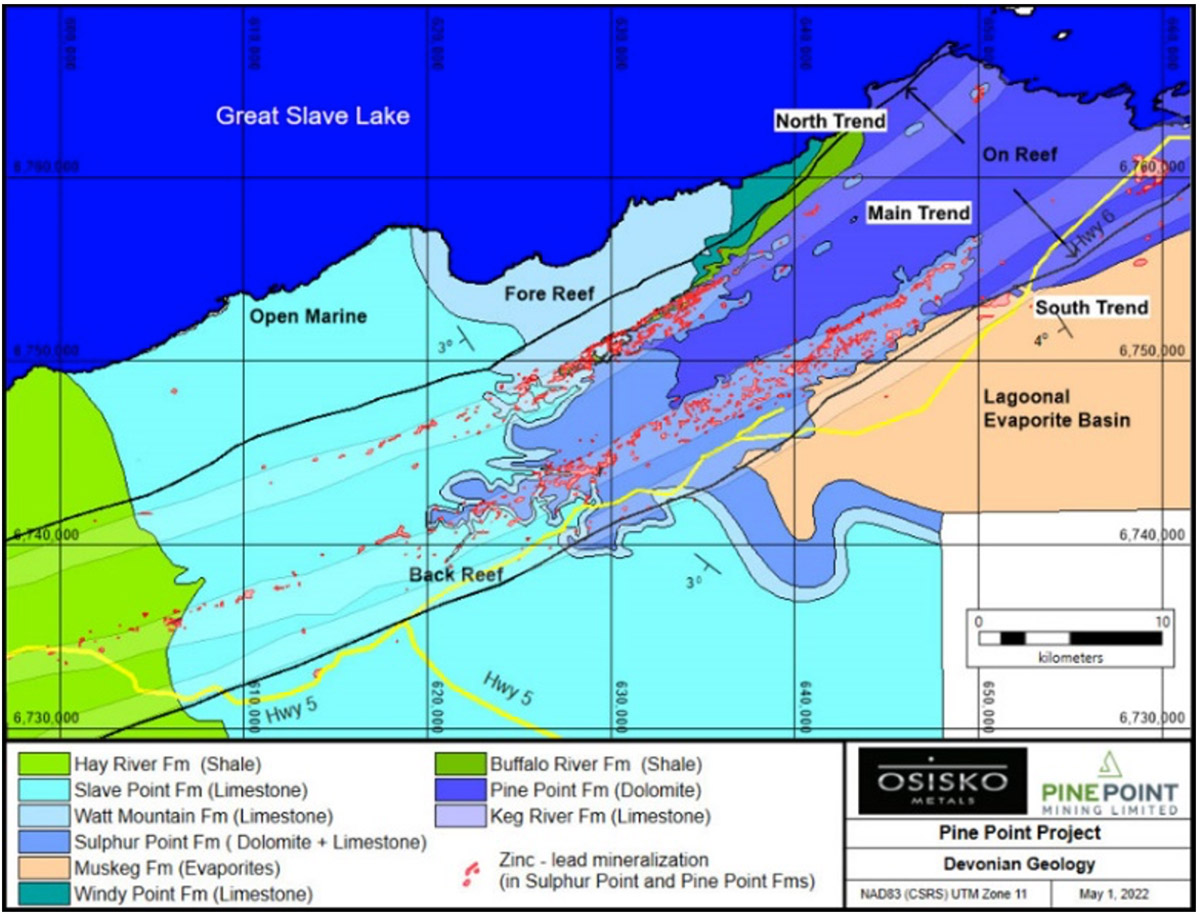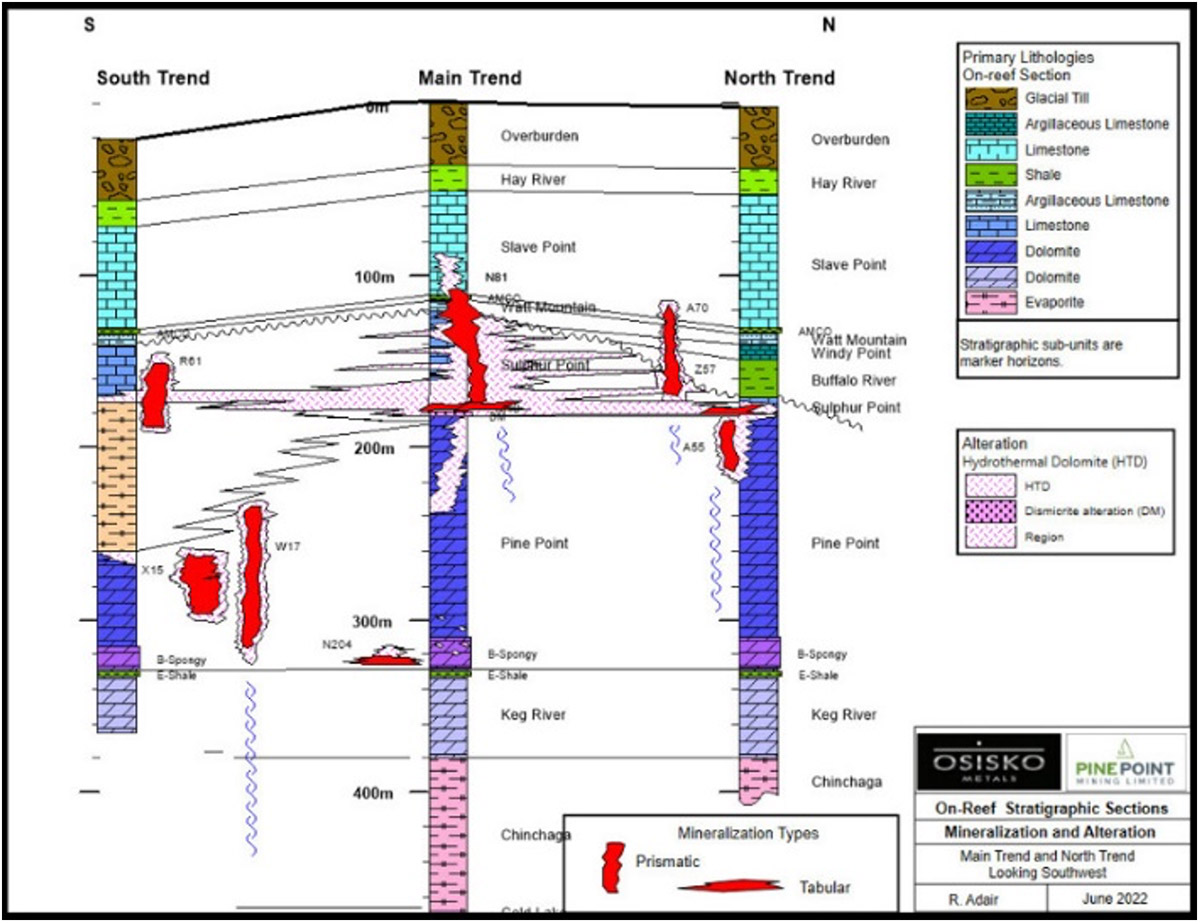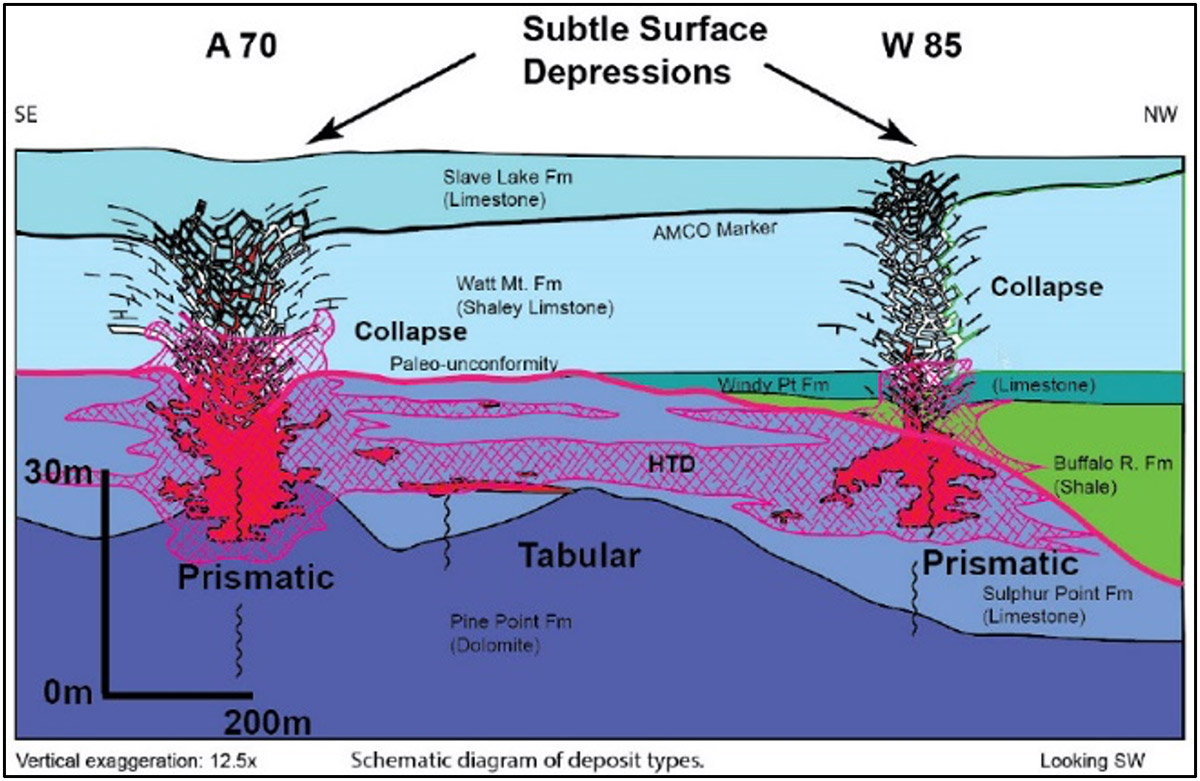Pine Point deposits are classified as “Carbonate hosted zinc-lead” and they occur in dolomite-altered, early Devonian carbonate rocks characteristic of a barrier reef sequence. Deposits are characterized as “Tabular” and “Prismatic” types based on geometry. Tabular deposits are elongated, laterally extensive over kilometre scales and demonstrate a strata-bound preference to mineralization. Prismatic deposits are characterized by a vertical aspect, often crosscutting multiple stratigraphic units. Both types exhibit zinc and lead sulphide mineral zonation. The Great Slave Shear Zone, a deep-crustal structure, obliquely transects the Pine Point area and may have provided structural conduits and ground preparation for the deposition of minerals from the mineralizing fluids.
Early-stage dissolution of primary carbonates and precipitation of secondary hydrothermal dolomite alteration (HTD) was developed by low-temperature hydrothermal hypogenic fluids. Alteration and mineralization show preference for specific facies within the reef, but new evidence also suggests significant association with, or in proximity to, vertical structures. Sphalerite, galena, and minor marcasite mineralization are associated with on-going dissolution and hydrothermal dolomite precipitation. Alteration, a pathfinder to mineralization, is characterized by various textures and stages of hydrothermal dolomitization.
Figure 1: Pine Point Devonian geology

Figure 2: On-reef strategic sections mineralization and alteration

Figure 3: Schematic diagram of deposit types

